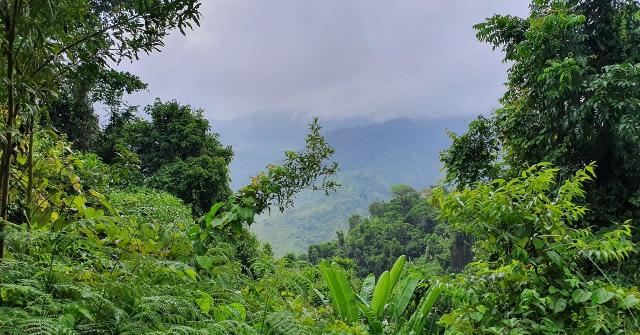New Monasticism: An Old Idea in a New Form
The names of Shane Claiborne and Jonathan Wilson Hartgrove were not known by anyone beyond their friends and family at the turn of the century. Now, just over a decade on, their names—like the name of the movement they are associated with, New Monasticism—have become part of the vocabulary of many people seeking the renewal of the church in the Western world.
The terminology of “new monasticism” was developed by my friend Jonathan Wilson in his 1998 book called Living Faithfully in a Fragmented World. In that book, Wilson draws on the insights of Alisdair MacIntyre to explore marks of Western culture that, over the years, have shaped or more often mis-shaped our personal lives and the life of the church. These marks include fragmentation of our worldview, a lack of historical identity and a future telos or goal, a retreat to the therapeutic in our personal lives, and overreliance upon the managerial in our leadership roles.
In response to the ways that these forces have misshaped our lives as the church, Wilson calls for a new type of monasticism that will resist these misshaping forces by taking up practices that have usually been associated with monasticism as theologian Dietrich Bonhoeffer himself said in 1935: “the restoration of the church will surely come only from a new type of monasticism which has nothing in common with the old but a complete lack of compromise in a life lived in accordance with the Sermon on the Mount in the discipleship of Christ.”. Noting the decline of local community that could sustain the moral life, Wilson also points to MacIntyre who ended his book After Virtue, by voicing a longing for "another... St. Benedict". By this, he meant someone in the present age to lead another renewal of morality and civility through community.
In one sense, New Monasticism was “birthed” in 2004 when Jonathan Wilson Hartgrove, Jonathan Wilson’s son-in-law pulled together a gathering of a number of existing communities and academics in Durham, North Carolina for a weekend. Those present included the Bruderhof community (established in 1920), Koinonia Farm (established in 1947) and Reba place fellowship (established in 1957). While this gathering brought folks together, it’s clear that some form of “new monasticism” had been around long before Jonathan Wilson coined the term.
Twelve Marks of New Monasticism
What emerged from the weekend were the "12 marks" of new monasticism. These "marks" are:
- Relocation to the "abandoned places of Empire" [at the margins of society]
- Sharing economic resources with fellow community members and the needy among us
- Hospitality to the stranger
- Lament for racial divisions within the church and our communities combined with the active pursuit of a just reconciliation
- Humble submission to Christ’s body, the Church
- Intentional formation in the way of Christ and the rule of the community along the lines of the old novitiate
- Nurturing common life among members of an intentional community
- Support for celibate singles alongside monogamous married couples and their children
- Geographical proximity to community members who share a common rule of life
- Care for the plot of God's earth given to us along with support of our local economies
- Peacemaking in the midst of violence and conflict resolution within communities along the lines of Matthew 18
- Commitment to a disciplined contemplative life
While these overlap with the traditional monastic vows of celibacy, poverty, and obedience among groups like the Benedictines, Cistercians, and Franciscans, leadership in these new communities tends to be more communal and less hierarchical.
What I discovered while doing my doctoral thesis in 2008 is that all twelve of these marks to one extent or another had been pursued and practiced in our community at Grandview Church in East Vancouver over the previous two decades. Clearly, we didn’t set out to become a “new monastic” church; instead, like practitioners across the Western church, we realized that the gospel called us to a more radical commitment in the face of the cultural forces misshaping our lives personally and corporately.
When I hosted our own new monastic gathering on Bowen Island in 2015 with some of these same groups who were at that initial gathering in North Carolina, we discussed how this movement could, like the monasticism that preceded it, be sustained and long-lasting, and how it could continue to resource the wider church for renewal. We also explored how these communities could develop a thicker engagement with culture in the same way that they had developed a thicker more intentional life together.
While every church may not be ready to form these smaller intentional type of communities with a common rule, the movement towards the kinds of common practices named in the 12 marks seems to me to be essential for all churches that are intending to resist the fragmenting, consumerist force in our culture and form persons and communities that can become a light to their neighborhoods.. At least, that’s the way I see it.
Resources
Websites
- The Emmaus Community in Victoria http://emmauscommunity.ca/
- Church of the Sojourners in San Francisco http://churchofthesojourners.org/
- Reba Place in Chicago https://www.rebaplacefellowship.org/
Books
- Jonathan Hartgrove Wilson, New Monasticism: What does it have to say to Today’s Church?
- Rutba House (editors), Schools of Conversion: The Twelve Marks of New Monasticism
- David Janzen, The Intentional Christian Community Handbook
- Tim Dickau, Plunging into the Kingdom Way: Practicing the shared strokes of community, hospitality, justice and confession







